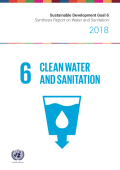

The Council of Ministers of Vanuatu endorsed the Vanuatu National Energy Roadmap (NERM) in 2013 as the overarching policy framework for developing Vanuatu’s energy sector. The Government of Vanuatu undertook the first revision of the NERM between October 2015 and May 2016 to update the roadmap’s goals and targets (Updated Vanuatu National Energy Road Map 2016-2030). Recognizing the importance of energy efficiency initiatives, and their centrality to meeting the Government of Vanuatu’s vision for the energy sector, energy efficiency was a key element in the revision of the NERM, alongside the need to increase implementation of renewable energy technologies.

The need to mainstream biodiversity into economic growth and development is being increasingly recognised and is now also firmly embedded in the Sustainable Development Goals.

